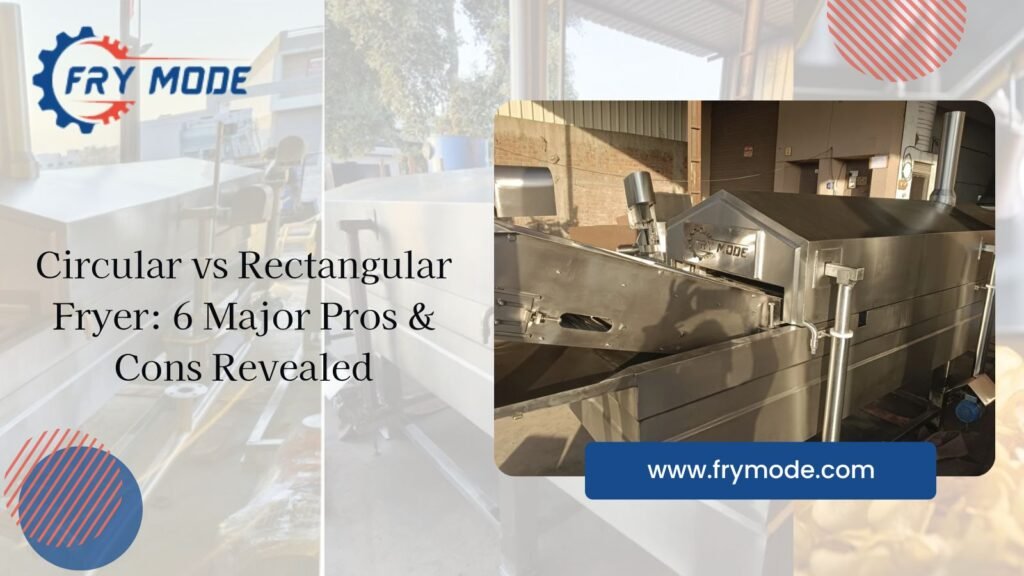Circular vs Rectangular Fryer: 6 Major Pros & Cons Revealed
Expert Advice on Selecting the Best Fryer Machine Manufacturer for Reliable, High-Quality
Selecting between a circular and rectangular batch fryer can significantly influence cost, capacity, and product quality. Here’s a detailed comparison to help you choose the right setup for your needs.

1. Oil Circulation & Fry Quality
Circular Fryer – Pro:
The round shape encourages natural oil movement. With built-in stirrers, the oil flows evenly—leading to consistent color and crispiness
Rectangular Fryer – Con:
Lacks inherent circular flow. Requires mechanical stirring or movement, or chips may stick and fry unevenly.
2. Even Heating & Temperature Control
Circular Fryer – Pro:
Indirect heating and heat-exchanger designs offer tight control. Techno claims up to 55% fuel savings
Rectangular Fryer – Pro:
Also supports indirect heating. Large surface area facilitates steady oil temperature, aided by tilting mechanisms.
3. Cleaning & Maintenance
Circular Fryer – Pro:
Round pans are easier and quicker to clean—fewer corners mean less buildup.
Rectangular Fryer – Con:
Corners trap residue, requiring more effort during cleaning cycles.
4. Production Capacity & Scalability
Fryer Type | Capacity per Hour | Notes |
Circular | 45–55 kg chips/hr (standard 30–60″ models) | Handles typical mid-scale loads |
Rectangular | 50–55 kg/hr (4’×2′ pan); up to 80 kg/hr with heat‑exchanger models | Offers larger batch variations |
Rectangular fryers shine in versatility and larger sizes.
5. Fuel & Energy Efficiency
Circular Fryer – Pro:
Heats effectively with both direct and indirect systems. Indirect heating shows ~50–55% fuel savings.
Rectangular Fryer – Pro/Con:
Indirect systems are efficient. However, larger heater surfaces could slightly raise heating costs compared to compact circular units.
6. Automation, Layout & Integration
Circular Fryer – Pro:
Auto-stir systems and tilting pots reduce labor needs. Compact footprint integrates well in medium-sized facilities.
Rectangular Fryer – Pro:
Platforms often include auto-tilt and digital controls. Wider shape fits seamless in linear production lines including conveyance and packaging .
Summary: Circular vs Rectangular Batch Fryers
Circular Fryer
Pros: Natural oil circulation, efficient heating, compact, easy cleaning, auto-stir options
Cons: Limited batch size, harder to integrate with inline setups
Rectangular Fryer
Pros: Higher capacity, easy integration, consistent heating, auto-tilt controls
Cons: Harder to clean, less natural oil flow, slightly larger space needed
Need Energy-Efficient Namkeen Fryer Machine?
Enhance quality and consistency with Frymode’s Automatic Namkeen fryer Machine. Request a demo today!
Which One Should You Choose?
Circular fryer is ideal if you want efficient, consistent frying with easier cleaning and compact layout.
Rectangular fryer is better suited for larger-scale production, streamlined line integration, and higher throughput.
